Stocks finished mostly lower on the day, with 313 stocks on the S&P 500 trading lower and just 185 trading higher. You would never know that from looking at the index that finished the day up by 23 bps, thanks mainly to Broadcom (NASDAQ:AVGO), and get this: Nvidia (NASDAQ:NVDA). Shocker.
At some point, perhaps the S&P 500 should be renamed the S&P 1 or the S&P 2 because it isn’t appropriate to call it the S&P 500. S&P 500 equal weight index ETF (NYSE:RSP), RSP, finished the day lower by 28 bps, the Nvidia-less Dow finished the day lower by 17 bps, and the Russell 2000 was down almost 90 bps.
Yesterday, the Russell 2000 (IWM) managed to gap higher and rally by around 3%; by the middle of today, all of the gains were gone, and the gap was filled. From a technical standpoint, the index hit its 20-day moving average yesterday, was rejected, and today, it closed below its 50-day moving average. It is probably not a positive indication of where this index is heading next, which is probably lower. How low will depend on whether or not the index can bounce off of support at $191 or if the index is in the middle of forming a double top.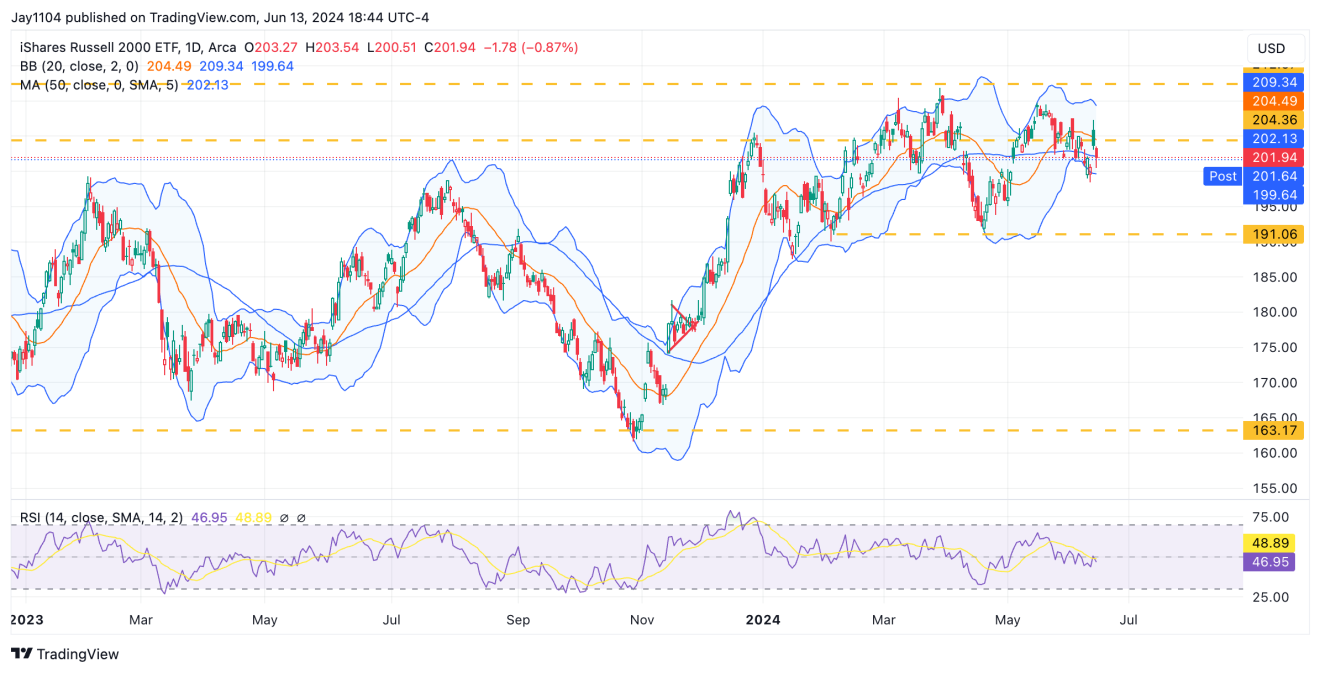
Why could the Russell head lower? Like most equities indexes, the Russell is highly correlated to credit spreads. The CDX high-yield credit spread index was up around 8 points. This is nothing major, but it was enough to pressure the small caps lower.
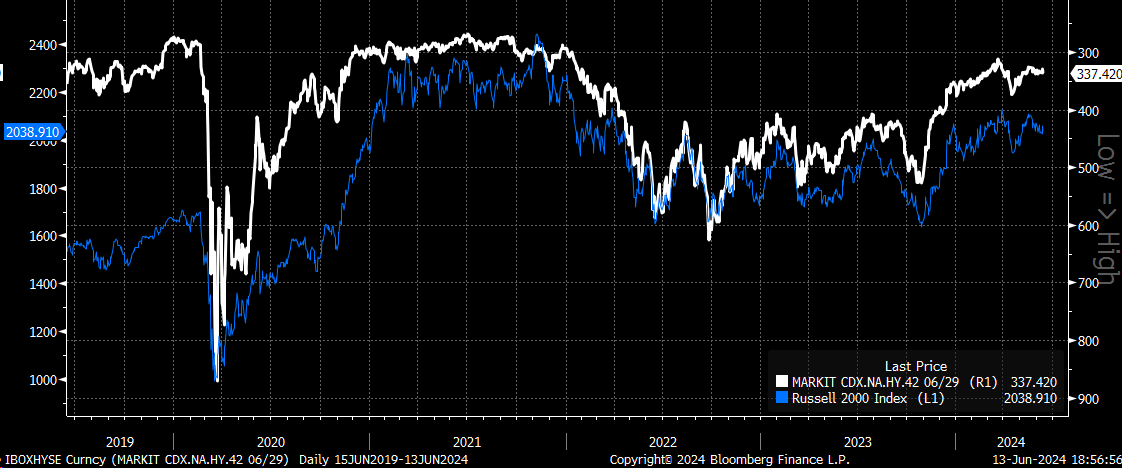
But credit spreads are widening in places like Europe, with the French-German 10-yr spread reaching its highest level since 2017 now that we have these snap elections taking in France. The spread is currently just 70 bps, which doesn’t sound like much, but these are definitely in the upper end of the range, even if they are well below European debt crisis-like levels.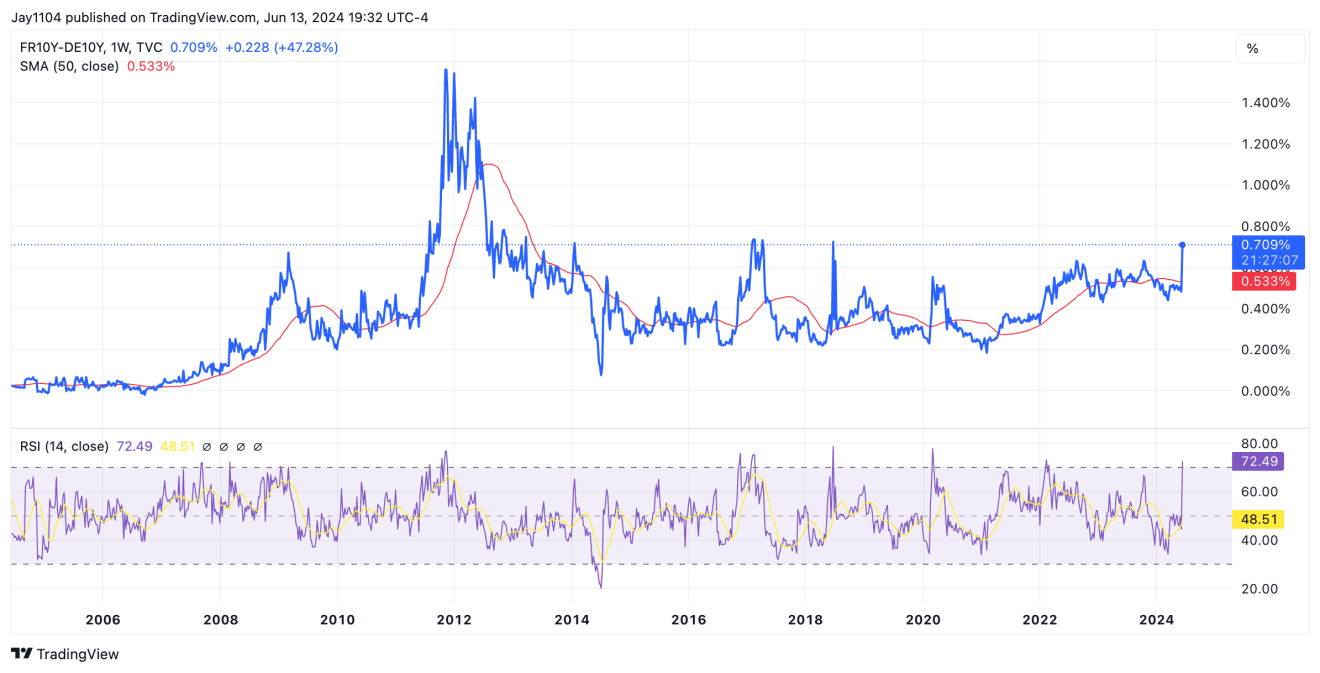
Italian and German 10s also widened some today, but not nearly as much, but are still at low levels. All of these spreads tend to move together, so if spreads in Europe keep rising, spreads in the US will likely follow.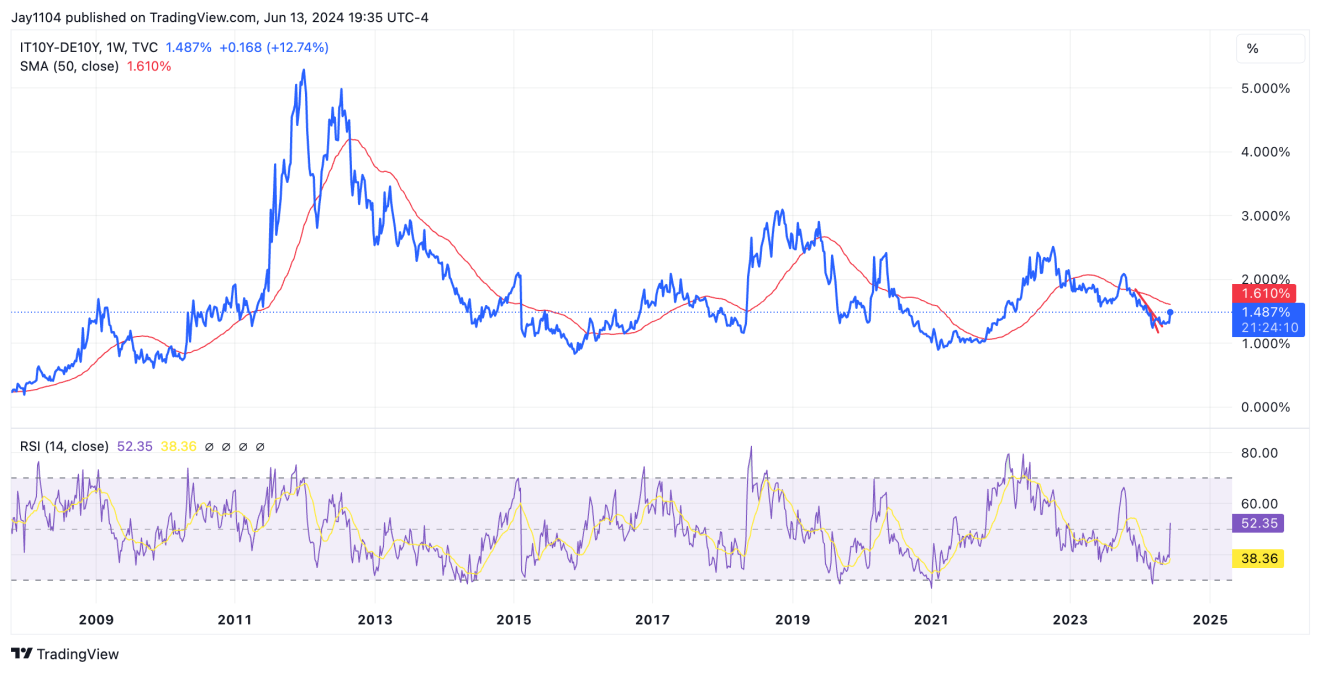
The Euro Stoxx 50 was down about 2% today. It is at a pretty interesting spot on the chart, and it looks fairly similar to the Dow and the Russell in some ways. But clearly, a breach of support at 4,885 would not be good for the index. There is also a gap of around 4,768.
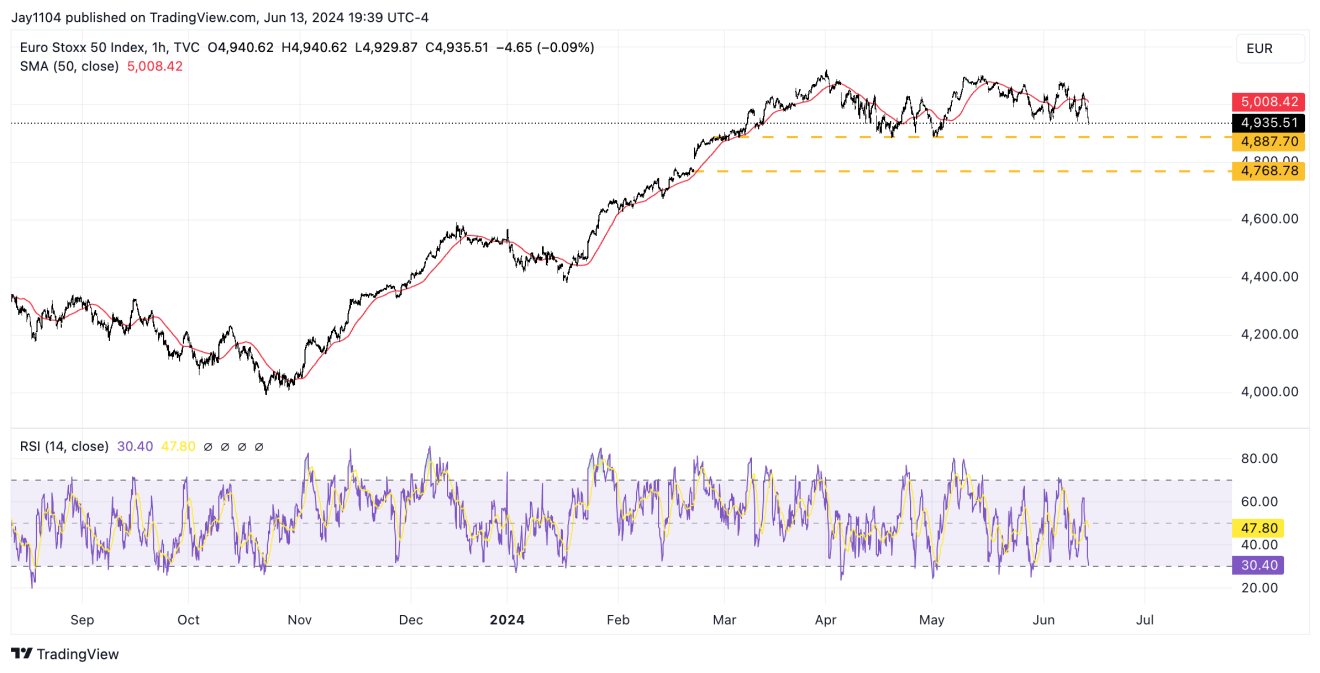
Right now, all these little things matter because the entire equity market has been built on excess risk-taking, which is what happens when stocks rally purely on multiple expansions and calendar year earnings go sideways for more than 18 months. Such has been the case for 2024 earnings estimates.
So right now, you have an S&P 500 trading at 22.5 times 2024 earnings estimates and roughly 20 times 2025 earnings, which are both insanely high valuations, especially considering when the 10-year is around 4.25 to 4.5%. Generally speaking, I used to think of 17 times 1-year forward as being expensive, which would value the S&P 500 some around 4,600 at 17 times $270 in earnings for 2025.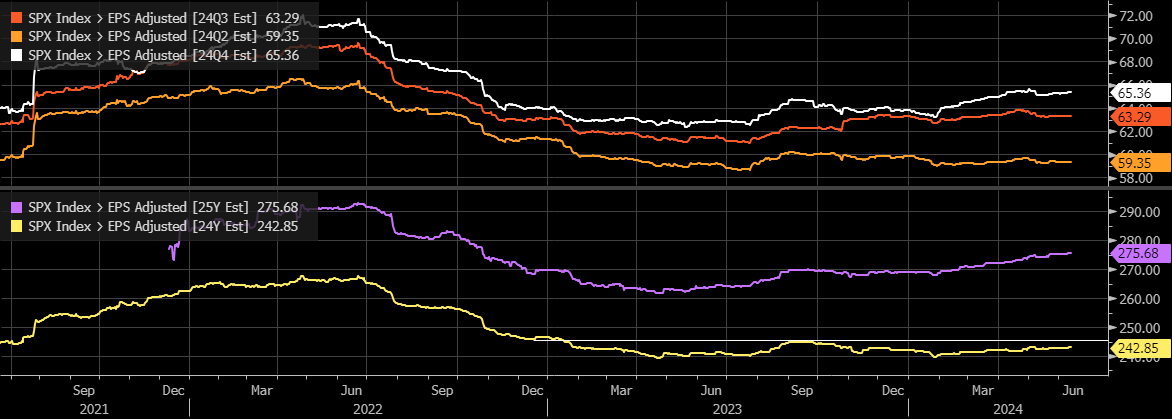
I noted today that GE broke some major support after it got a downgrade from JPMorgan (NYSE:JPM). Just looking at the chart, there could be some further downside, with the next level of support at $147.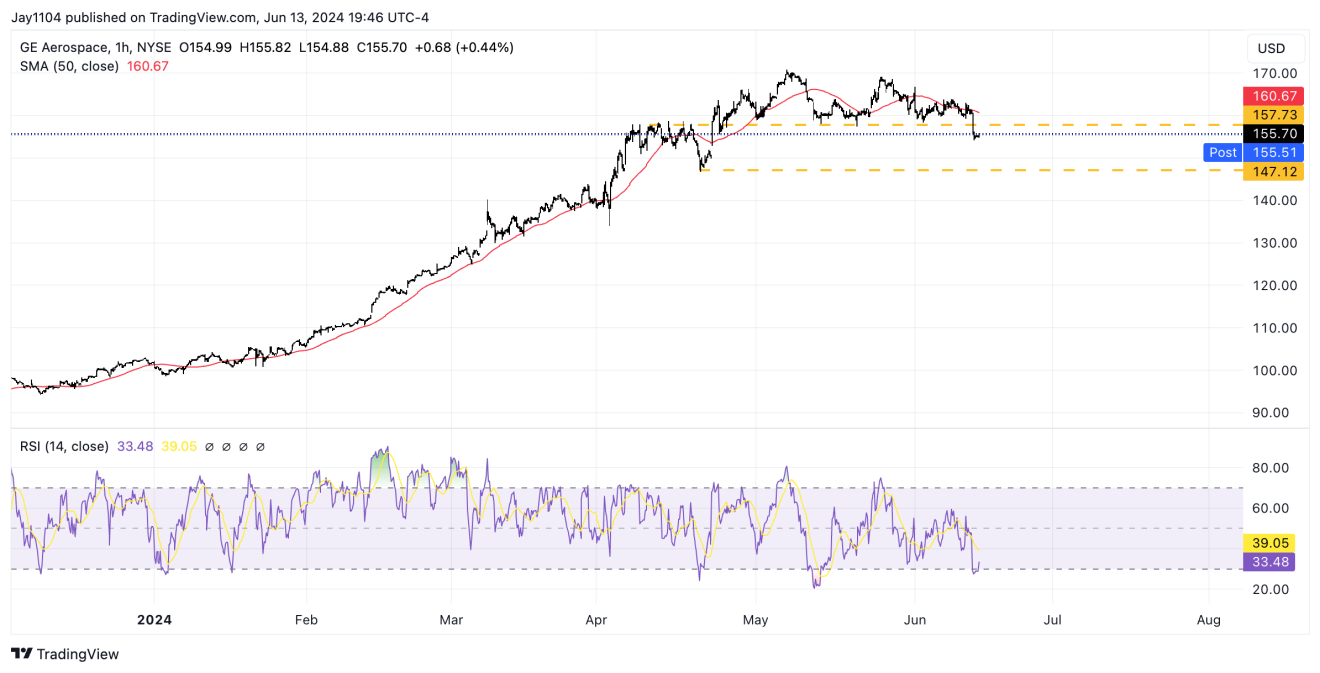
Anyway, that is for now.
